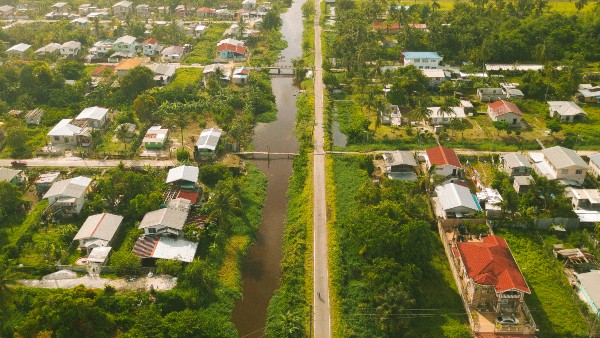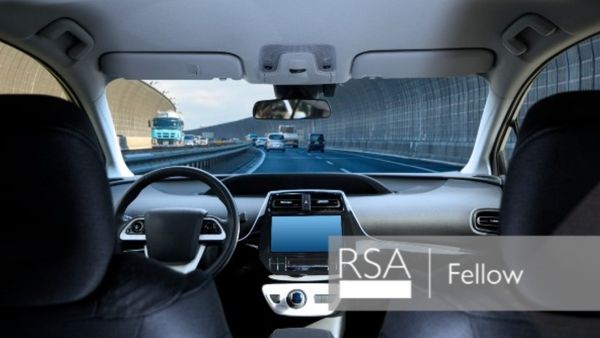With over half the world’s population living in urban conurbations, it is becoming increasingly important to see these areas as alternative sources of natural resources. Chris Coggins FRS argues it is time to embrace urban mining.
The term urban ore was first used over 50 years ago by Jane Jacobs in her seminal work, The Death and Life of American Cities. More attention has been given to this potential resource as the opportunities provided by primary ores and energy-intensive mining have declined alongside rising transport costs, greater demand through manufacturing, consumption and increased quantities of waste.
There is a long history of recycling ferrous and non-ferrous metals from commercial and industrial wastes, end-of-life vehicles and consumer durables. The first bottle bank was launched in the UK 1977 followed by others to collect a range of consumer waste items.
This is now accompanied by recycling more precious metals and rare earths (especially for those where China controls over 90 per cent of primary production) including those highlighted by the EU list of ‘critical raw materials’. It is possible to extract 100 grams of gold from one tonne of waste electrical and electronic equipment and 280 grams from one tonne of mobile phones compared to 5 grams from primary ore. Other examples range from lead in cathode ray tubes to rhodium from catalytic converters and a wide range of other rare earths and common/rare metals.
Since 1967 in the UK, the establishment of civic amenity sites, more recently called household waste recycling centres, are now well established as urban mines for a range of post-consumer wastes. The term applies to historic scrap metal sites and second-hand shops, and even jumble sales. More recent examples include car boot sales and electronic versions such as ebay and freecycle.
The Clean Air Acts of the 1950s and increased use of central heating in the UK resulted in more paper and cardboard being disposed of in household waste. Demand increased as more was consumed as part of a growing information society and use of packaging materials and then discarded as wastes. Urban forests also have a long history; early recycling by local authorities often involved trailers for paper and cardboard behind refuse disposal vehicles or dustcarts, then accompanied by paperbanks and later separate kerbside collections. However, there are limits to the use of recycled paper and cardboard due to degradation of the fibres over time and the need to use primary pulp.
With significant quantities of food waste being thrown away by households (a WRAP report suggested over 7 million tonnes in 2007 at a cost per household of over £400 per annum)and the commercial and catering sectors, urban biomass has become a more recent resource. Historically food waste might have been home composted or fed to pigs, but it is now collected by many local authorities in the UK and either composted or used as feedstock for anaerobic digestion. In both cases the organic output may be considered a product and used instead of fertilisers, and with anaerobic digestion the carbon is converted to methane and available as an energy resource.
In England, mandatory targets for recycling/composting were introduced between 2003 and 2008, and many authorities started to (or extended) collect garden waste with tonnages increasing. By 2011/12 garden and food waste at 4 million tonnes accounted for over 40 per cent of all materials collected for recycling/composting, compared to 278,000 tonnes and 25 per cent in 1996/97.
Combustible materials may have been burnt as a fuel in household fires, with the resultant wastes being mined as in 19th century London dustyards, with fine coal dust being used for compost-like material or making bricks (53 per cent of waste inputs) and small/larger pieces (29 per cent of waste inputs) used as a fuel.
Such urban carbon has become increasingly important in the last 10 to 20 years. Sources included materials to generate methane through anaerobic digestion), or residual wastes combusted in incinerators (originally called ‘destructors’ to reduce volume and tonnage to landfill). . These technologies for residual wastes now have to meet high efficiency requirements, and commonly generate electricity.
The future might see further technologies involving bio-refineries and the development of hydrogen fuel cells based on urban carbon wastes. In terms of carbon, the use of recyclates saves on primary energy, raging form 95 per cent with aluminium, to 24 per cent with cardboard and 5 to 30 per cent for glass.
For all of these urban resources, the principles of extraction from the natural environment are replicated in terms of availability (a range of materials targeted for recycling/composting/energy recovery), quality (influenced by source-segregation and material recovery technologies and accessibility (costs of collection and processing versus prices of primary raw materials). Combinations of these various aspects of urban mining and industrial-scale activities are now found in ecoparks, resource recovery parks or sustainable growth parks, where different wastes are received and prepared for reuse through re-manufacturing, wastes are recycled into a range of new products and activities are self-contained in terms of on-site energy from waste generation.
At the same time, the debate about recognising and referring to wastes as resources is moving rapidly on. The RSA ‘s Great Recovery initiative, which focuses on better design, is underpinned by these concepts. Meanwhile, the Ellen Macarthur Foundation produced two important reports on the circular economy, providing a range of materials for teaching sustainability in schools; just two years on and these are being used in over 1,600 schools in the UK.
These trends are welcome: we need to recognise urban wastes as assets and resources to be reused, recycled and recovered and not as unloved things to be discarded, thrown away and considered the detritus of urban life; especially if we are to consider sustainability and the future wellbeing of humankind.
Related articles
-
Lessons from the land of many waters
Alexander Alder-Westlake
In a time of rising sea levels and flooding threats, Alexander Alder-Westlake suggests we draw lessons from a country most of us know nothing about. With its unique geography, topography and history, Guyana has much to teach the rest of the planet.
-
What are robots thinking?
Sylvester Kaczmarek
As robots take on ever more human tasks and make more decisions on their own, we need to examine and question how they are making their choices. Robot psychology could be the bridge between AI and ethical decision-making.
-
Critical thinking for a global society
Natasha Robson
In a complex world of free-flowing information and misinformation, where we are often being sold to without realising it, clear thought is more vital than ever. Natasha Robson explains how she is educating people to think about their thinking



Join the discussion
Comments
Please login to post a comment or reply
Don't have an account? Click here to register.
Such a good article!! Very interesting :) Thanks!